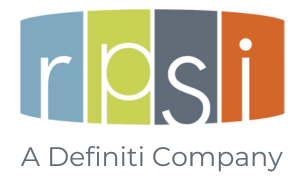Plan Sponsor Outlook – 4th Quarter 2021
Want to Improve Retirement Outcomes? Make Sure Employees Understand Social Security Basics
New research reveals Americans have significant knowledge gaps regarding Social Security benefits.
According to a recent survey1, more than half of Americans express confidence that they know exactly how to optimize their Social Security benefits. However, only 6% actually understand all the factors that determine the maximum benefit someone can receive. In addition, the report highlighted additional knowledge gaps:
- A full 39% don’t know at what age they are eligible to receive their full benefits.
- Just over half (51%) do not have a clear understanding of how much they will receive in future income.
- Over one-third (37%) incorrectly assume that Social Security benefits are not protected against inflation.
- Nearly half (45%) mistakenly believe if they claim their benefits early, their benefits will go up automatically when they reach full retirement age.

Respondents Worry About Social Security’s Future
The report suggests that one big reason that Americans may not be staying informed on the benefits of Social Security is that they have doubts that it will be around when they need it. Approximately 7 in 10 adults age 25+ (71%) worry about the Social Security
program running out in their lifetime.
What might the future of Social Security look like? The 2020 Social Security trustees report2 estimated that the combined reserves of the various Social Security programs (retirement, survivor, and disability) would be depleted in 2035 unless changes are made. The Social Security Board of Trustees believes the most likely adjustments will come in the form of reduced benefits or an increase in taxes (or some combination of both). But it’s extremely unlikely that Social Security will go away.
The Opportunity for Plan Sponsors and Advisors
This might be a timely opportunity to help close the knowledge gap that many employees have regarding Social Security benefits. Plan sponsors should work with their advisor and plan recordkeeper to provide educational materials (or possibly provide employees with a quick education campaign) that cover the following:
- Realistic Social Security preretirement income replacement expectations
- Eligible ages to receive retirement benefits (the range is 62–70)
- Definition and clarification of “full retirement age” (for the majority of employees, this will be age 67)
- Factors to consider when deciding whether to take benefits earlier versus later Annual cost-of-living adjustments to Social
- Security benefits (as an example, in 2021 the cost-of-living adjustment is 1.3%)
Nationwide’s 8th Annual Social Security Consumer Survey can be found here.
Pondering the Next Stage in the Evolution of
Retirement
A recent survey confirms that there is no single path to retirement.
Franklin Templeton’s June 2021 “Voice of the American Worker” survey confirms that retirement today feels “less cookie cutter than it used to be,” according to 82% of those polled.
The survey found that individuals can benefit from personalized guidance to achieve their financial goals — an area where a financial advisor can help. The survey also showed that many participants are looking to their employers for more tools and resources. But most of all, the survey found that the way participants think about retirement is changing.

A More Holistic View of Financial Well-Being
The vast majority of survey respondents associate their current physical (74%), mental (70%), and financial (66%) health with well-being. More than half say their financial well-being isn’t primarily about money but includes their health and lifestyle (57%). Interestingly, while workers today place nearly equal importance on mental (81%), physical (80%), and financial (76%) health, they feel the least in control of their financial (55%) health as compared to their physical (62%) and mental (58%) health.
The Future of Workplace Benefits
Three out of four workers want their workplace to provide more resources to help them with their overall financial well-being (75%), believing their employer should provide incentives for good financial habits (79%) — as well as good health habits (78%). In fact, workers are more interested in long-term support over today’s monetary gains, with most preferring a boosted 401(k) match to a raise.
Nine in 10 respondents are also looking for tools to visualize their future and optimize well-being, with top choices being planning tools and resources (89%). Tools designed to help achieve financial independence (35%) and visualize long- and short-term financial goals side by side (35%) top their wish list.
The Changing Retirement Landscape
Eighty percent of respondents agree that the traditional idea of retirement is no longer accurate for most people’s expectations or experiences, while at the same
time, three quarters (75%) say that their future financial goals and plans look different today than they did five years ago.
Respondents also feel it is more important to achieve financial freedom than to retire but that financial freedom is not always as attainable. More specifically, 76% of respondents say there is appeal in achieving financial freedom, whereas only 56% think it is likely achievable. At the same time, 69% say there is appeal in retirement, whereas 61% say it is likely achievable — a notably smaller gap.
Workers identified their most important financial milestones today as financial freedom (76%) and financial independence (74%), also indicating that financial independence feels more empowering than retirement (81%). Women find financial independence particularly appealing (81% vs. 68% men).
Plan Sponsors Ask…
There are definitely some potential compliance violations that are more common among retirement plans. The Government Accountability Office recently published a 56-page report, which provides updated information regarding the Employee Benefits Security Administration’s (EBSA’s) enforcement activities and how the agency is working to improve their investigative and enforcement processes.
As far as retirement plans go, the most common Employee Retirement Income Security Act of 1974 (ERISA) violation categories found in closed EBSA investigations through 2020 included:
- Fiduciary imprudence (869 cases)
- Exclusive purpose (793 cases)
- Fiduciary self-dealing (543 cases)
- Prohibited transactions with a party in interest (457 cases)
- Failure to follow plan documents (344 cases)
- Improper benefit to employer (235 cases)
- Duty of disclosure: plan descriptions and summary plan descriptions (183 cases)
- Bonding (159 cases).
Your plan advisor is a great resource to help you better understand what these violations
encompass and how best to avoid them.
It is somewhat of a growing trend and understandable if it catches many plan sponsors by surprise. Consider the following:
- According to a 2020 Employee Financial Wellness Survey by iGrad/Wellable, one-third of employees nearing retirement (ages 55–64) feel they don’t have enough saved to retire.
- According to PwC’s 2020 Employee Financial Wellness Survey, delayed retirements can be expensive for employers, with increased annual costs of 1% to 1.5%. The survey noted that workers delaying retirement usually have more paid sick leave and vacation days, along with higher life, disability, and health insurance costs.
There are some basic things you can do as a plan sponsor to help buck the trend. For example, if you haven’t already, consider leveraging auto enrollment and auto escalation to encourage more effective saving strategies among employees. Also, make sure employees over the age of 50 are aware of “catch up” contributions — extra money they are allowed to save toward retirement each year ($6,500 is the amount for 2021, on top of the $19,500 maximum that all employees can contribute). You may also want to think about implementing some basic personal finance education, focusing on topics such as budgeting and debt management, to help improve the overall financial health of your employees.
Earlier this year, the U.S. Department of Labor (DOL) released first-ever guidance for plan sponsors, plan fiduciaries, recordkeepers, and plan participants on best practices for maintaining cybersecurity. In addition, the DOL issued informal guidance noting that “responsible plan fiduciaries have an obligation to ensure proper mitigation of cybersecurity
risks.”
- The first piece of guidance offers tips for hiring a service provider with strong cybersecurity practices and monitoring their activities.
- The second piece of guidance lays out cybersecurity program best practices to help plan fiduciaries and recordkeepers stay on top of their responsibilities to manage cybersecurity risks.
- Lastly, the DOL issued online security tips aimed at plan participants and beneficiaries who check their retirement accounts online.
You can access EBSA’s full guidance here.
Pension Plan Limitations for 2021
- 401(k) Maximum Elective Deferral – $19,500* (*$26,000 for those age 50 or older, if plan permits)
- Defined Contribution Maximum Annual Addition – $58,000
- Highly Compensated Employee Threshold – $130,000
- Annual Compensation Limit – $290,000
Show Me the Money!
For the past five years, Black Rock’s DC Pulse survey has helped identify trends in retirement and highlight the needs and concerns of savers. As we come out of COVID-19, it’s a timely lens into the mindset of savers and what’s needed going forward.
A key focus of the 2021 DC Pulse survey was retirement income. Survey results indicate that workers have a strong desire for a retirement savings vehicle that can produce a predictable income stream throughout their retirement years. In fact, 81% of participants said it would be helpful if their employer provided secure income-generating options in their workplace plan.
In addition:
- Eighty-six percent of participants find a well-diversified fund with a balance that is automatically converted to a guaranteed income stream as they near retirement appealing.
- Eighty-nine percent of participants agree that having guaranteed income in retirement would have a positive impact on their current well-being.
How do your plan sponsor peers feel about retirement income? Ninety-six percent of sponsors surveyed feel responsible for helping participants generate and/or manage their income in retirement. In addition, 86% agree their plan participants would benefit from a target date fund that has a feature that generates guaranteed retirement income. And while 82% of sponsors do not currently offer a specific retirement income product, they are likely to add one in the next 12 months.
You can view the results of the entire 2021 Black Rock DC Pulse survey here.
Plan Sponsor’s Quarterly Calendar
- Send payroll and employee census data to the plan’s recordkeeper for plan-year-end testing (calendar-year plans).
- Audit fourth quarter payroll and plan deposit dates to ensure compliance with the DOL’s rules regarding timely deposit of participant contributions and loan repayments.
- Subscribe Past Issues Translate Verify that employees who became eligible for the plan between October 1 and December 31 received and returned an enrollment form. Follow up on forms that were not returned.
- Update the plan’s ERISA fidelity bond coverage to reflect the plan’s assets as of December 31 (calendar-year plans). Remember that if the plan holds employer stock, bond coverage is higher than for nonstock plans.
- Issue a reminder memo or email to all employees to encourage them to review and update, if necessary, their beneficiary designations for all benefit plans by which they are covered.
- Review and revise the roster of all plan fiduciaries and confirm each individual’s responsibilities and duties to the plan in writing. Ensure that each fiduciary understands his or her obligations to the plan.
- Provide quarterly benefit/disclosure statement and statement of plan fees and expenses actually charged to individual plan accounts during the prior quarter, within 45 days of end of the last quarter.
- Begin planning for the timely completion and submission of the plan’s form 5500 and, if required, a plan audit (calendar-year plans). Consider, if appropriate, the DOL’s small plan audit waiver requirements.
- Review all outstanding participant plan loans to determine if there are any delinquent payments. Also, confirm that each loan’s repayment period and the amount borrowed comply with legal limits.
- Check bulletin boards and display racks to make sure that posters and other plan materials are conspicuously posted and readily available to employees, and that information is complete and current.
Consult your plan’s financial, legal or tax advisor regarding these and other items that may apply to your plan.
© 2021 Kmotion, Inc. This newsletter is a publication of Kmotion, Inc., whose role is solely that of publisher. The articles and opinions in this newsletter are those of Kmotion. The articles and opinions are for general information only and are not intended to provide specific advice or recommendations for any individual. Nothing in this publication shall be construed as providing investment counseling or directing employees to participate in any investment program in any way. Please consult your financial advisor or other appropriate professional for further assistance with regard to your individual situation.
